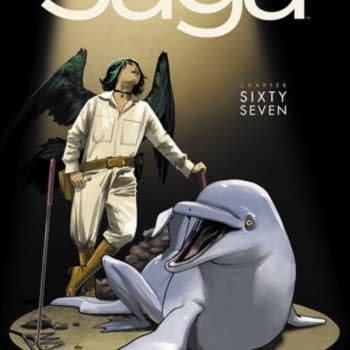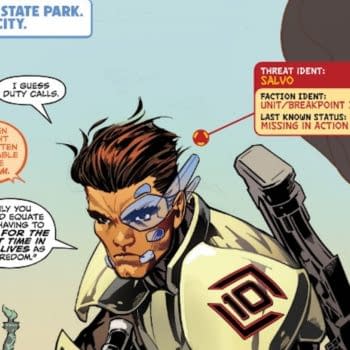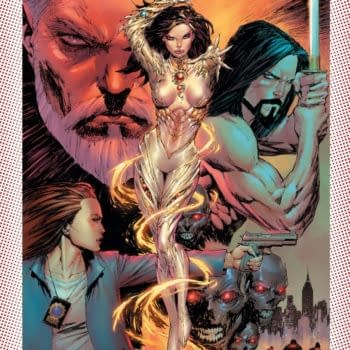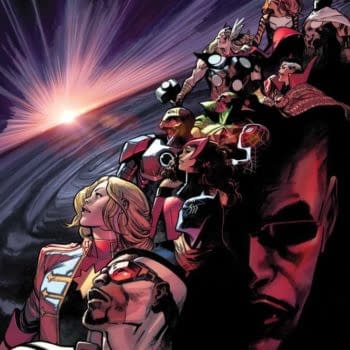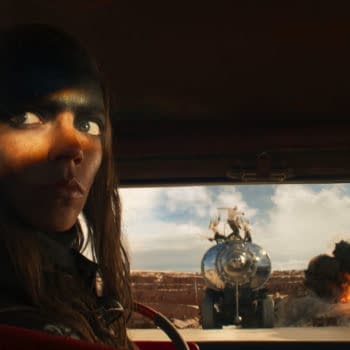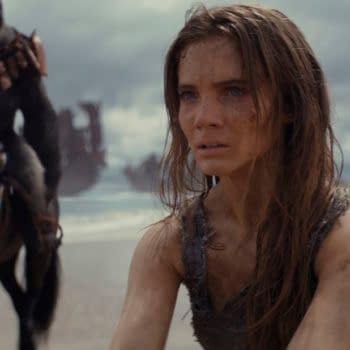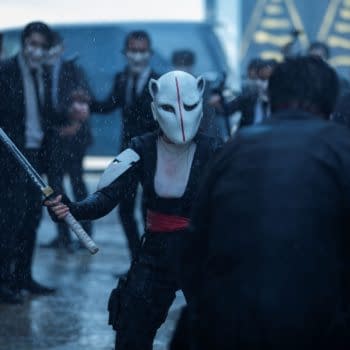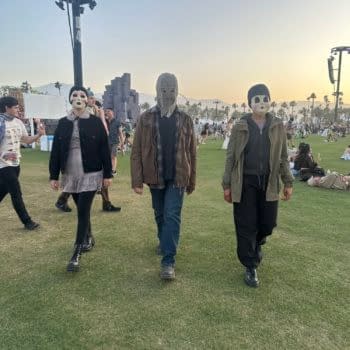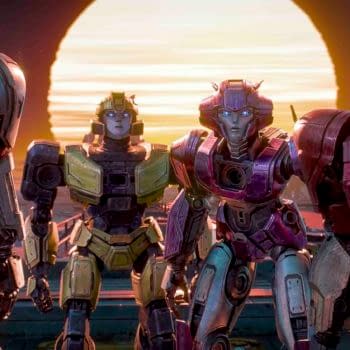Posted in: Look! It Moves! by Adi Tantimedh, Movies | Tagged: film, look it moves, renzaburo shibata, sleepy eyes of death
The Wandering Samurai As Hipster Douchebag – Look! It Moves! By Adi Tantimedh
Adi Tantimedh writes;
The 1960s were a boom time for Samurai movies, with studios in Japan churning out not just epics but popular series on a regular basis. Instead of TV series, it was widescreen, full-colour extravaganzas shot on studio sets and locations with the comfort food of unchanging heroes. Series like Zatoichi, Red Peony Gambler (about a female wandering yakuza) were a mainstay at the local cinemas in Japan, and then there's the Nemuri Kyoshiro series.
Some of the films were released on video in the US in the 80s under the title Sleepy Eyes of Death. This was the oddest samurai movie series of the lot, and also one of the most popular in Japan during the Sixties.
[youtube]https://www.youtube.com/watch?v=AfLR7vJXYxc[/youtube]
Originally a series of novels from the 1950s by Renzaburo Shibata, the same writer who wrote the original short story that introduced Zatoichi, Nemuri Kyoshiro was a wandering ronin in the 19th Century who's the half-European son of a Buddhist nun (or was it a geisha? Accounts seemed to vary) raped by a Portuguese Satanist and born during a black mass, like you do. This is probably why an alternate title for the series was Son of the Black Mass.
Unlike most samurai heroes, Nemuri Kyoshiro was not an honourable swordsman with a heart of gold but a cynical, sneering rogue who gets mixed up in schemes by gangsters, thieves and corrupt officials out to grab money, treasure or power and invariably ends each movie by using his (totally fictitious) "Full Moon Cut" Technique to kill them all and move on, his dim view of the world confirmed yet again.
Basically this is the wandering swordsman as hipster douchebag, decades before hipster douchebags became a thing. It was the biggest hit series of Sixties Japanese samurai movies where the main character was a massive asshole, and a murderous at that, which accounts for some of its appeal. The bad guys were even bigger assholes than he was. Of course, being an antihero, he always ends each movie by doing the right thing, which is begrudgingly defending the innocent and slaughtering all the bad guys. If he was a complete bastard, he would just be a villain.
There were three movies made in the mid-1950s, but it was really the series made in the Sixties starring Raizo Ichikawa that were the most popular. Ichikawa's performance brought a cold, amoral edge to the character that gave him an unpredictable charisma. In an era where the counterculture and oppositional rebellion was on the rise, Nemuri Kyoshiro would seem the ideal antihero alongside Zatoichi's working class hero as portrayed by Katsu Shintaro. Where Zatoichi was a rolly-polly teddy bear, Nemuri Kyoshiro was a ruthless bastard and rebel, like if you imagined James Dean as a wandering samurai. Women threw themselves at him, and he happily slept his way through them, distrustful as only a true misogynist can be. He often sadistically humiliated and possibly even raped the conniving, murderous femme fatale figures that wanted to manipulate him to be a killer or fall guy for them. Japanese pop culture has never exactly been a beacon of progressive feminist thinking.
The movies took place in a darker universe than most samurai movies of the time, with corruption and backstabbing on all sides informing Kyoshiro's fatalism and misanthropy, which played into the increasing dark mood of the Sixties. I often thought the stories had a Dashiell Hammett vibe about them, even apart from the increasingly weird flashbacks to the black mass ritual at Kyoshiro's birth.
[youtube]https://www.youtube.com/watch?v=i-lbR4cR_II[/youtube]
The movie series made leading man Raizo Ichikawa a huge star in Japan and would have gone on for a long time if he hadn't died from cancer during production on the 12th entry. His last movie was finished with the use of a double and the studio tried to continue the series with a new actor, but Ichikawa had defined the role so completely that the public didn't take to his replacement and the Sixties series died out shortly after.
In the decades since the movie series, there have been TV series, TV movies, new movies, a manga series and even a stage play starring pop star GACKT last year, but the twelve movies starring Ichikawa are still considered the definitive version after the novels and Ichikawa's cult following is still going strong, almost like he was the samurai James Dean. Even the recent anime series Samurai Champloo might have been influenced by Nemuri Kyoshiro, splitting the two sides of his persona: the aloof stoical asshole and the horny, obnoxious asshole into two characters, and playing it all as a postmodernist pop hip-hop comedy.
Animeigo, the company that brought over and remaster the Lone Wolf and Cub movies, released all twelve Nemuri Kyoshiro movies on DVD in the US back in 2009. You might think some of the filmmaking and storytelling style is dated, but it still has moments more weird, shocking and sleazy than a lot of genre movies these days. But then I think hardcore samurai movie fans already know this.
More like Full Moon Tea at lookitmoves@gmail.com
Follow the official LOOK! IT MOVES! twitter feed at http://twitter.com/lookitmoves for thoughts and snark on media and pop culture, stuff for future columns and stuff I may never spend a whole column writing about.
Look! It Moves! © Adisakdi Tantimedh












